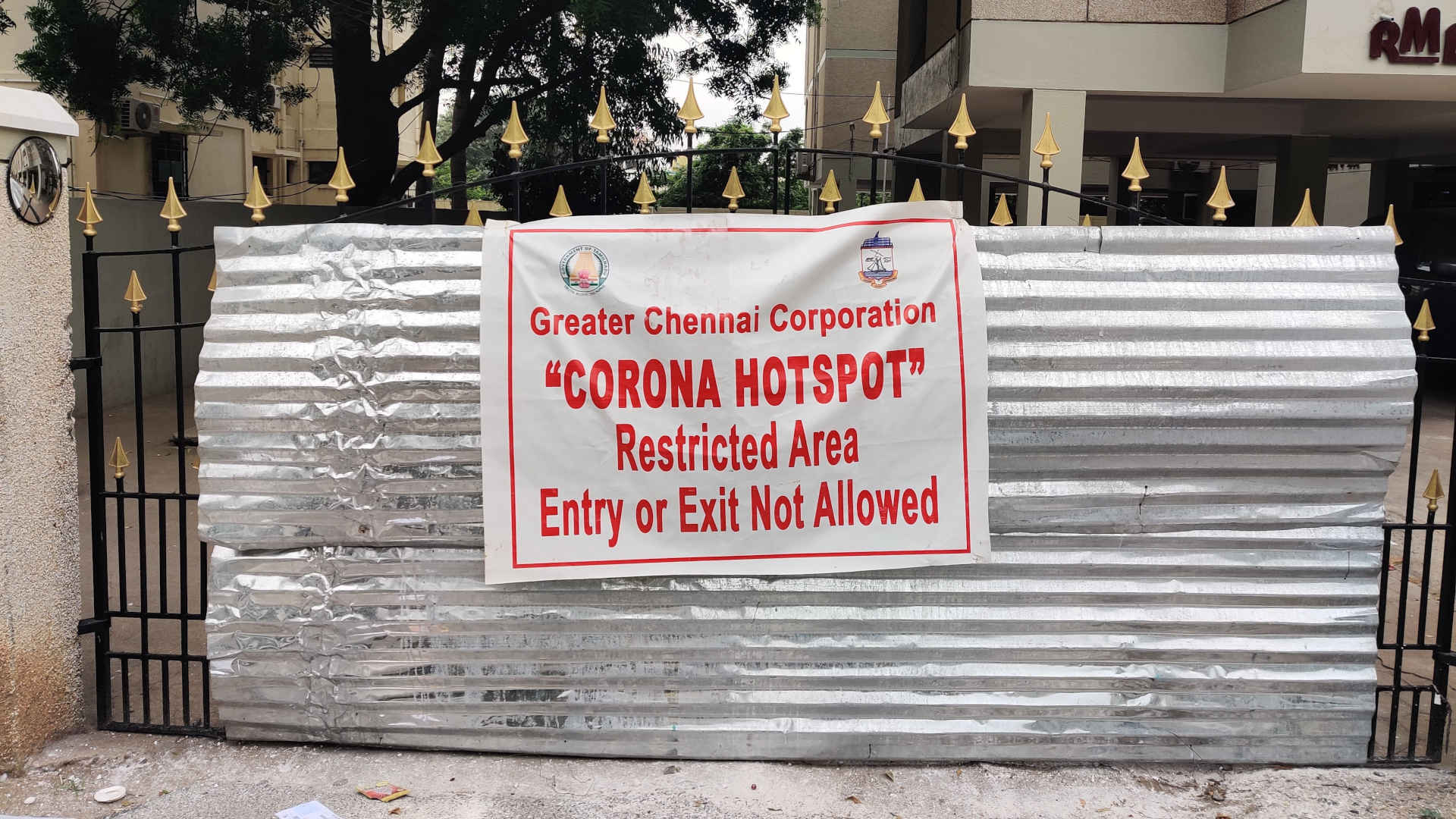Earlier this year, Shashank Joshi, a physician in Mumbai, told the writer and doctor Siddhartha Mukherjee that, despite some dire predictions, a second wave of Covid-19 cases had not materialized in his part of the world. “Our ICUs are nearly empty,” he said. As Mukherjee wrote in The New Yorker at the time, even as some countries’ health systems collapsed in the face of Covid-19, others — mostly in sub-Saharan Africa and South Asia — had experienced consistently low rates of severe disease, far below what projections suggested should be the case. Mukherjee called this regional gap “the greatest conundrum of the pandemic.”
For more than a year, rates of hospitalization and death from Covid-19 in India defied expectations and remained relatively low, with the exception of a wave of cases in September 2020. Studies earlier this year estimated that more than half of people in Delhi, and one-in-five people in India as a whole, had antibodies for the coronavirus, suggesting the virus had spread widely — but, for some reason, caused few serious cases.
Now, 16 months since Covid-19 began sweeping around the world, India may be on the brink of the pandemic’s largest humanitarian disaster. A new wave of infections has swamped hospitals and led to ongoing shortages of oxygen. People have turned to social media to make desperate pleas for medical care; overwhelmed crematoriums have set up pyres in parking lots.
Official statistics are reporting around 386,000 new cases and more than 3,000 deaths per day; analysts say the true numbers are likely much higher. One estimate, from The Financial Times, would suggest that 30,000 or more people are dying from Covid-19 each day in India — numbers far beyond the worst daily figures reported in the United States and Brazil, which currently have the world’s highest official total death tolls from the pandemic.
The search for answers — and for blame — has begun. New variants seem to be accelerating the outbreak, but their exact role is unclear. Many critics have charged the government of Prime Minister Narendra Modi, a nationalist politician with autocratic tendencies, with lifting restrictions too soon. In The Atlantic, journalist Vidya Krishnan lays some blame on a wealthy elite in India who, she argues, have enabled “a system of medical apartheid,” investing in some excellent private hospitals at the expense of a robust national health care system. And experts have criticized wealthy countries for a sluggish response to the crisis: The Biden administration, for example, was slow to share surplus vaccines with India, even as cases there climbed and millions of doses sat unused in U.S. storage facilities.
But the sudden surge also highlights that, after more than a year of intensive study — and remarkable scientific achievements — basic questions about Covid-19 remain unanswered, and sudden surges of the virus still have the capacity to surprise researchers and clinicians. “We always anticipated a second wave in April and May,” Ali Raza, who oversees an emergency room in Delhi, told Bloomberg this week, “but we never knew it would hit us so hard and so fast.”
Also in the News:
• In 1985, a police helicopter dropped a bomb on a rowhouse in a predominantly Black neighborhood in West Philadelphia, killing 11 people and destroying homes over roughly a city block. On Monday, the University of Pennsylvania apologized for its handing of the bones from one of the blast’s victims. At the time of the bombing, the house was a commune for MOVE, an anti-corporate and anti-technology Black separatist group. According to The Philadelphia Inquirer, a pelvic bone and part of a femur from one of the MOVE victims — originally unidentified, although one pathologist later claimed they belonged to a 14-year-old girl named Katricia Dotson — ended up with Penn professor Alan Mann for analysis, and were then kept at the Penn Museum. Since then, without the public’s knowledge, the remains passed many times between anthropologists at Penn and at Princeton University; they were also used in an online class entitled “Real Bones: Adventures in Forensic Anthropology.” At a news conference on Monday, current MOVE members expressed outrage at the findings. “I could not imagine, in my worse nightmare, that the government would drop a bomb on us and kill my brothers and sisters,” said Mike Africa, of MOVE. “And I could not have imagined 36 years later that they would be displaying parts of our family as if they’re some dinosaur relics that they dug up.” (The Philadelphia Inquirer)
• For decades, researchers have sought to develop a highly effective vaccine for malaria. Now, as Nature and other outlets reported this week, a new trial of a vaccine against malaria has shown promising results in kids. In the trial, researchers tested the vaccine, dubbed R21, in 450 infants and toddlers in Burkina Faso. The scientists found that the vaccine was “up to 77 percent effective at preventing malaria over the course of one year,” meeting an elusive 75-percent efficacy threshold set by the World Health Organization. Researchers hope that the vaccine, which Nature describes as “both more potent and cheaper to produce” than another leading vaccine candidate, will one day help fight a disease that kills an estimated 274,000 small children each year. Development of malaria vaccines, though, has been slow: The malaria parasite mutates rapidly, making long-lasting protection difficult to achieve. Funding has also been relatively scarce for research on the disease, which largely affects people in poor countries. For now, it’s unclear whether R21 will offer robust protection past six months, and whether it will be as effective in larger trials, and in countries where malaria poses a year-round danger. (In Burkina Faso, malaria is only a threat for half the year.) Still, with the encouraging results from R21, the researchers are now planning a larger multi-country trial, which will test the vaccine in 4,800 kids. (Nature)
• A new analysis of particulate pollution in the U.S. finds that Black, Latino, and Asian Americans suffer from greater exposures to the dangerous pollutants than White people. The pattern of harm was so strong, across nearly every source of particulate pollution analyzed, that the researchers themselves were startled by the finding. “The deck is stacked against people of color, for almost every emission source,” Joshua Apte, an engineering professor at the University of California, Berkeley, and one of the study’s co-authors, told The Washington Post. The analysis focused on the class of tiny particulates known as PM2.5, which have been linked to a range of health problems, causing millions of deaths worldwide each year. The research team looked at PM2.5 sources, ranging from motor vehicles to factories to restaurants, and found that, on average, White Americans had lower exposure than people of color to nearly every source of emissions. The authors lay some of the blame on racist housing policies that have pushed minority communities closer to factories, highways, and other sources of particulate pollution, suggesting that systemic change would be required to address the disparities. (The Washington Post)
• On Wednesday, the U.S. Senate voted to restore Obama-era restrictions on methane, reversing a regulatory rollback of the Trump presidency. The Senate vote was “the legislative equivalent of a double negative,” Sen. Angus King of Maine said at a press conference, calling it “the repeal of a repeal.” The new measure would restore requirements for oil and gas companies to detect and repair leaks of methane, a greenhouse gas that is many times more potent than carbon dioxide, though it lingers for less time in the atmosphere. The vote — the first of the new congressional session to address climate change — was notable in part for its bipartisan support. Republican Sens. Rob Portman, Susan Collins, and Lindsey Graham joined with Democrats using a maneuver that sidestepped filibuster rules to pass the legislation 52-42. The measure also garnered support from big oil and gas companies, who say that methane emissions need to be controlled for natural gas to be accepted as a clean alternative to other fossil fuels. Smaller companies in the oil and gas industry have argued against the methane restrictions, citing the cost burden. In the coming weeks, the House will vote on a similar resolution, potentially paving the way for the restrictions to become law. (Politico)
• And finally: On Wednesday, at the annual conference of the Microbiology Society, a team of researchers presented a technique — which, so far, remains preliminary — for using bacteria to remove microplastics from water. In recent years, researchers have begun to pay more attention to microplastics — pieces of plastic, less than 5 millimeter in size, that enter the ocean and other bodies of water. The production of plastic products, such as water bottles, can inadvertently introduce these plastic particles into water. Synthetic microbeads found in cosmetic products and washed down the drain can also cause microplastic pollution, and even washing synthetic clothes like nylon can lead to contamination. The microbiologists used the bacteria Pseudomonas aeruginosa to engineer a bacterial biofilm that captures individual pieces of plastic found in water and causes them to sink. The researchers then collected the biofilm, and with a specially engineered biofilm-dispersal gene caused it to let go of the microplastic pieces, making it possible to collect them en masse and recycle them. The research is still preliminary, and some specifics of the approach may be difficult to apply at scale outside the lab. But Sylvia Lang Liu, a microbiologist at Hong Kong Polytechnic University and the lead researcher on the project, said developing a method of microplastic removal was imperative for helping prevent “the ‘plastification’ of our natural environments.” (The Guardian)
“Also in the News” items are compiled and written by Undark staff. Deborah Blum, Brooke Borel, Lucas Haugen, Sudhi Oberoi, and Ashley Smart contributed to this roundup.










